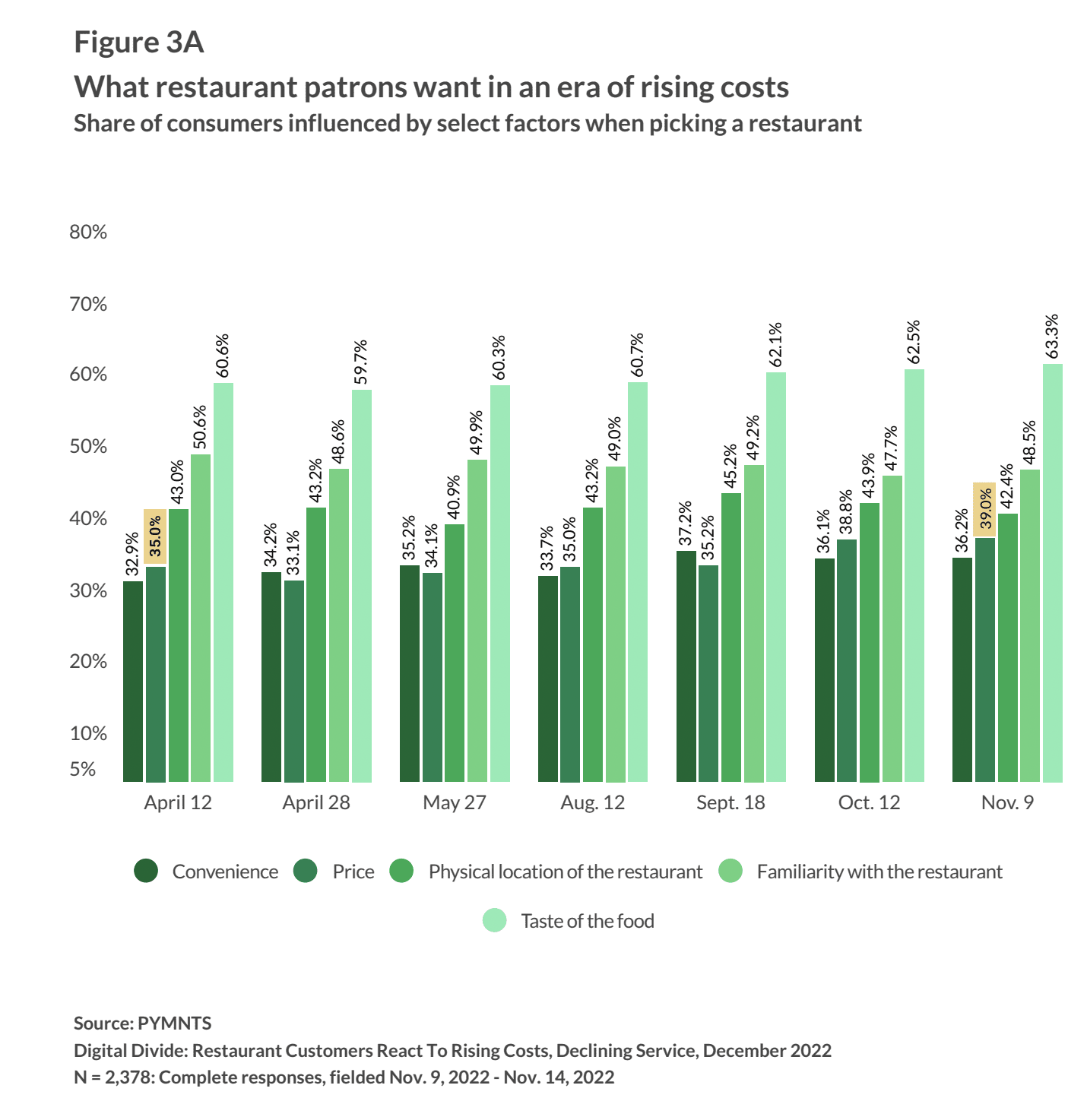
As restaurant menu prices rise, diners are seeking out more affordable options.
By the Numbers
Research from the latest edition of PYMNTS’ Digital Divide study, “The 2022 Restaurant Digital Divide: Restaurant Customers React to Rising Costs, Declining Service,” which drew from a survey of 2,378 U.S. restaurant patrons, found that 39% are influenced by price when picking a restaurant.

The Data in Action
But here’s the catch: Even major restaurant brands with low prices are feeling the impact. Take, for instance, quick-service restaurant (QSR) giant McDonald’s.
“We are seeing some trade down,” McDonald’s Chief Financial Officer Ian Borden told analysts in October. “That trade down is mainly with our lower income consumers, and we’re seeing that shift from meal purchases to more value offer items.”
Consequently, many brands are becoming more aggressive in their rewards and deal offers in an effort to keep diners coming back.
“With some of the macroeconomic trends ahead, I think it would make sense if rewards programs started to become more generous, and more restaurants are participating in them,” Or’el Anbar, director of analytics at fast-casual chain Just Salad, told PYMNTS in an interview. “Because it’s easy to roll out to a lot of point-of-sale systems and use the technology restaurants already have in place to now offer rewards functionality, and customers are going to be looking for value.”
For smaller restaurants that do not have the option to heavily discount, matters are looking bleaker. Research from PYMNTS’ study “Main Street Health Q3 2022: SMBs Battle Inflation,” which drew from a July survey of 533 U.S. businesses, found that the share of businesses in the food, entertainment and lodging sectors that consider it “less than somewhat likely” that they will continue to operate for the next two years surged to 8.2% in July from 4.6% in January.
The restaurant industry in the United States has been significantly impacted by the pandemic. Many restaurants have been forced to close or significantly reduce their operations due to public health measures and economic restrictions. This has led to significant financial challenges for many restaurant owners and workers.
However, the situation has varied widely across the country and within the industry. Some restaurants, particularly those offering takeout and delivery options, have been able to adapt to the changing circumstances and continue operating, while others have struggled.
Many restaurants have also benefited from government assistance programs, such as the Paycheck Protection Program, which provided loans to help small businesses cover payroll and other expenses.
In general, the restaurant industry has been hard hit by the pandemic, but it has also shown resilience and adaptability in the face of unprecedented challenges. As the situation continues to evolve, the impact on the industry will likely continue to change as well.